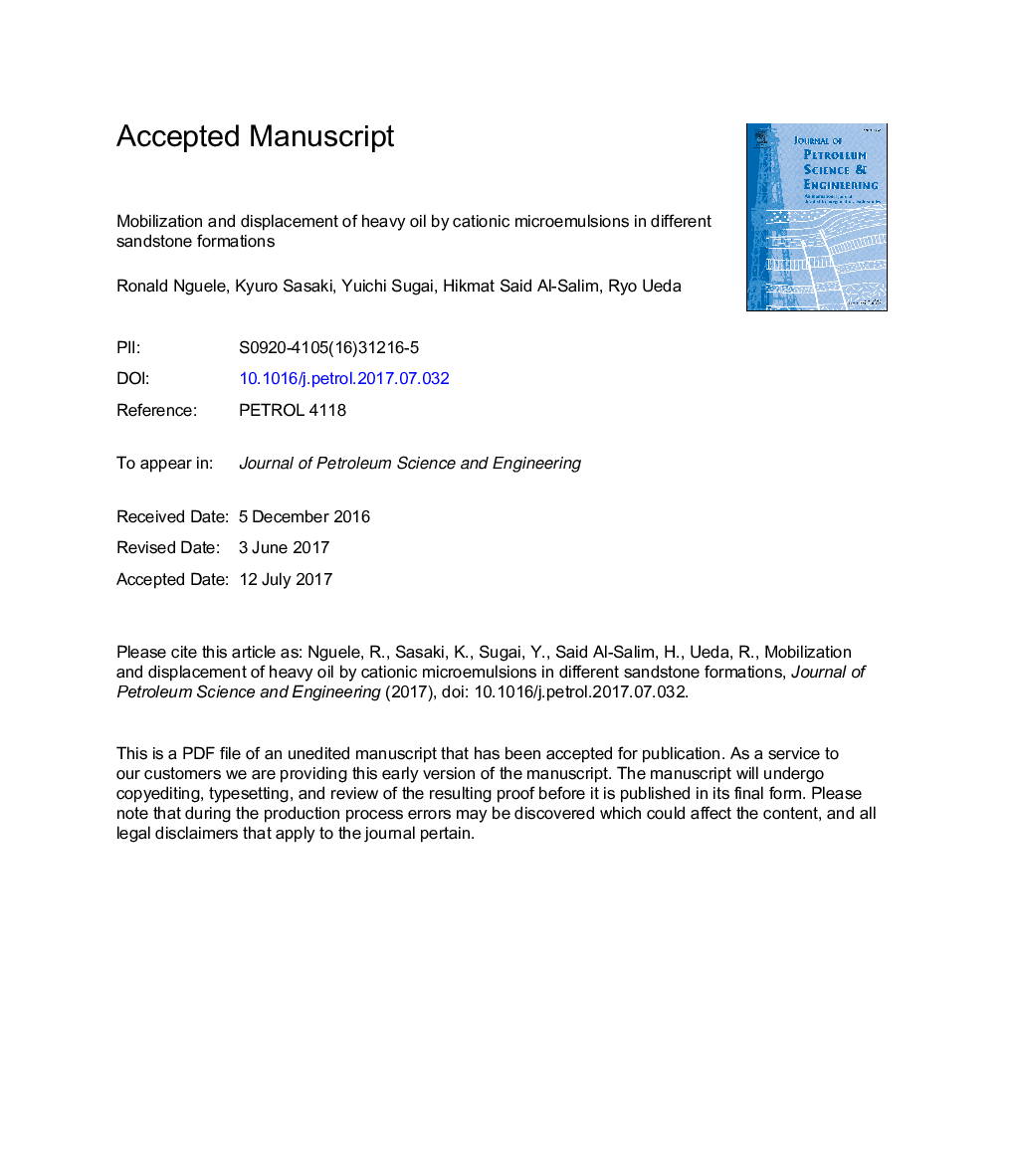| Article ID | Journal | Published Year | Pages | File Type |
|---|---|---|---|---|
| 5484017 | Journal of Petroleum Science and Engineering | 2017 | 25 Pages |
Abstract
Herein is presented a hybrid production scheme that considered the injection of gel type-microemulsions to mobilize and to displace stranded heavy oil. The present work investigated not only the flow of proposed microemulsions during their journey through the sandstone cores, but also evaluates the influence of flooding conditions on their displacement efficiency. The proposed microemulsion formulations were prepared from micellar slugs, which were found efficient in solubilizing for heavy oils especially when they were prepared from a cationic Gemini surfactant with a longer alkyl chain. A series of coreflood tests showed that the injection of formulated microemulsions in a conventional water-flooded Berea sandstones recovered about 20.3 and 31.6% of initial-oil-in place (IOIP). The same formulations, injected in an artificially fractured and heterogeneous sandstones, yielded an oil recovery of 6.4 and 8.4% of IOIP respectively. Regardless the nature of the network of oil-bearing matrix, the heaviest formulation, that was the microemulsion prepared from the cationic Gemini surfactant with the longest alkyl chain, stood as a better displacing agent compared to its counterpart prepared from the a short alkyl chain. The mechanism of oil production was found subsequent to a reduction in viscous forces (order of 10â10), which itself was altered by the chemistry inherent to the propagation of microemulsion and that of the formation brines. These concomitant mechanisms prompt the wettability alteration of the sandstone from mixed-wet to water-wet for conventional sandstone and to strongly-water unconventional cores. Also, the formation of sludgy materials, subsequent to microemulsion flooding, was drawn as the main challenge in this work that could be mitigated by altering the composition of the preflush stage. For this production to be efficient in an unconventional formation, the results presented herein suggest a modification of the injection scheme.
Keywords
Related Topics
Physical Sciences and Engineering
Earth and Planetary Sciences
Economic Geology
Authors
Ronald Nguele, Kyuro Sasaki, Yuichi Sugai, Hikmat Said Al-Salim, Ryo Ueda,
